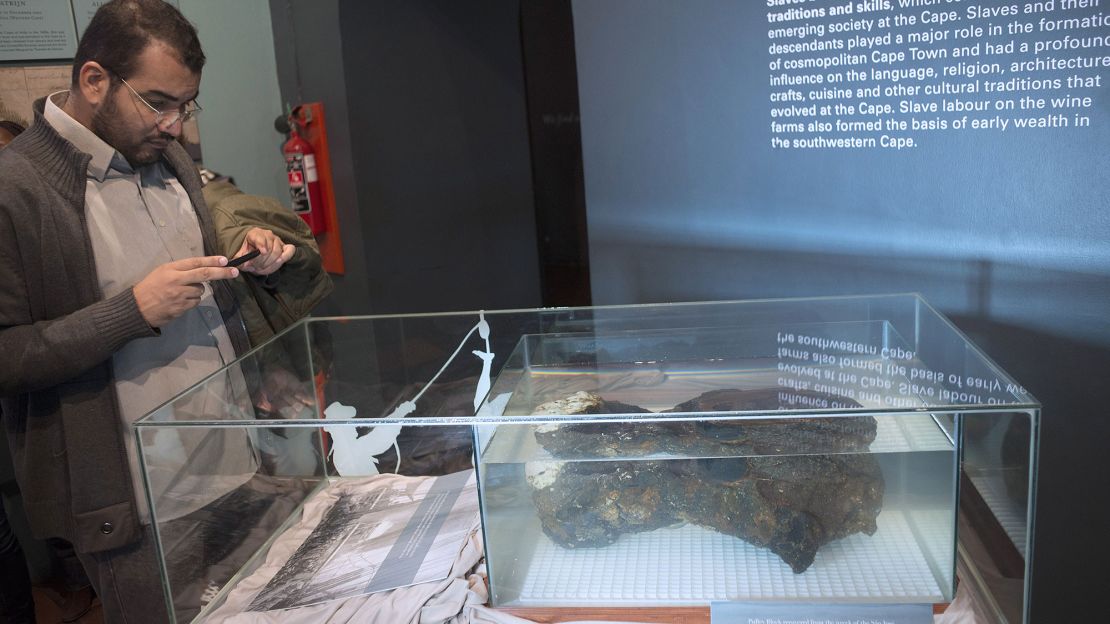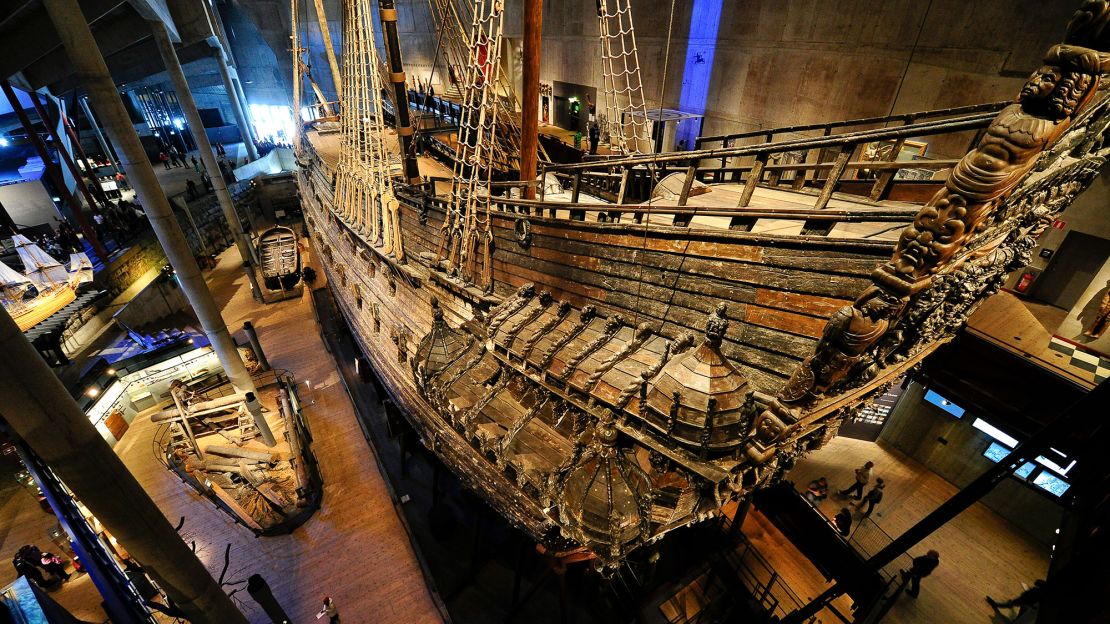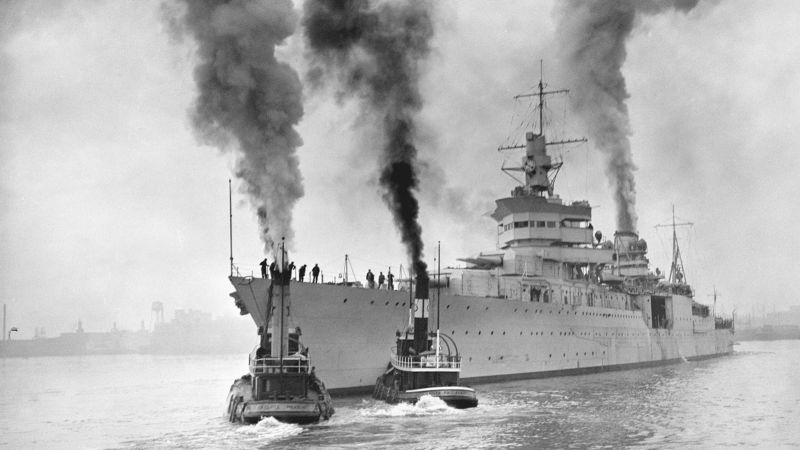Editor's note: Monthly Ticket is a CNN travel series that highlights some of the most fascinating topics in the world of travel. In October, we shifted our focus to the offbeat, highlighting everything from (supposedly) haunted spaces to abandoned places.
cnn
—
In March 2022, the world gasped when the remarkably preserved wreck of Ernest Shackleton's HMS Endurance was discovered nearly two miles beneath the icy Antarctic seas.
But many more sunken ships remain at the bottom of the ocean, waiting to be rediscovered.
These are some of the most infamous and elusive shipwrecks in the world, plus some you can see for yourself (some without even getting wet).
A humble cabin boy took the blame for the sinking of Christopher Columbus' flagship Santa Maria off the coast of Haiti on Christmas Eve 1492. The inexperienced sailor is said to have taken the helm after Columbus went for a nap. , and shortly after discarded the ship, crashing it into a coral reef.
That's a theory, anyway. Regardless of how the Italian explorer's ship met its fate, excitement boiled over in May 2014, when archaeologist Barry Clifford claimed he had stumbled upon the long-lost wreck.
The hearts of maritime history buffs sank after UNESCO poured cold water on the claim, saying the ship that had been found was from a much later period.
The Santa Maria is still down there somewhere.
This 16th century merchant ship, or “carraca,” traveled between India and its home in Portugal. But given its gigantic size (118 feet long and 111 feet high), it was an unwieldy beast to captain.
Perhaps it was only a matter of time before the Flor de la Mar sank, which occurred during a severe storm off Sumatra, Indonesia, in 1511.
Most of the crew were killed and their loot (said to include the entire personal fortune of a Portuguese governor, valued at $2.6 billion in today's money) was lost.
Recently, a fictional version of the pirate Zheng Yi Sao went in search of treasure in an episode of the British sci-fi series “Doctor Who,” only to unleash the feared Sea Devils.
She may not have her own theme song sung by Celine Dion, but the SS Waratah is known as “Australia's Titanic,” and rightly so.
The Waratah, a passenger cargo ship built to travel between Europe and Australia with a stopover in Africa, disappeared shortly after setting sail from the city of Durban, in present-day South Africa, in 1909, just three years before the Titanic tragedy. As for the cause, theories abound.
The complete liner, with eight cabins, a music room and the 211 passengers and crew, was never found. Ninety years after the sinking of the Waratah, the National Marine and Underwater Agency thought they had finally found it, but it was a false alarm.
The late thriller writer Clive Cussler, who spent much of his life searching for the wreck, said: “I suppose it will remain elusive for a while longer.”
Rotten Tomatoes' “Tomatometer” might rack up a stale 17% for Nicolas Cage's 2016 film, “USS Indianapolis: Men of Courage,” but in real life, the ship played a decisive role in World War II.
The Indianapolis was chosen to transport the uranium core of the “Little Boy” nuclear bomb to Tinian Island, where the weapon was assembled shortly before being used with devastating effects on Hiroshima.
The delivery of the deadly cargo went smoothly, but on its return voyage, the Indianapolis was hit by a Japanese submarine, and many of the crew died from shark attacks and salt poisoning.
The warship's exact whereabouts remained a mystery for decades, but it was finally located by a team led by Microsoft co-founder Paul Allen in 2017: 18,000 feet below the surface of the Pacific.

Not just one shipwreck, but a whole frightful kind of them.
An estimated 1,000 ships now lying at the bottom of the ocean were complicit in the perverse “triangular trade” across the Atlantic that saw between 12 and 13 million Africans forced into slavery.
Many of these ships sank in turbulent weather conditions, such as the São José, which sank off the coast of South Africa in 1794.
Others, like the Clotilda, were intentionally sunk by their owners to hide evidence of the slave trade, long after the 1807 law prohibiting the importation of slaves.
The remains of both ships have already been located: the São José, thanks to the work of Diving with a Purpose (DWP), a group of mostly black divers who dive at the sites of sunken slave ships and bring back objects such as rusty remains. handcuffs and iron ballasts to the surface.
It is impossible to recover such objects without also unearthing stories of human suffering, although DWP's aim is to document the grim legacy of slavery, using it to educate and enlighten.
Still, these ships are notoriously elusive and many of them may never see the light of day again.
Mehmed Çakir was diving for sponges off the coast of Yalıkavak, Turkey, in 1982, when he came across the remains of a commercial ship that had sunk here about 3,000 years earlier.
Theirs was the first of many dives (over 22,400 in fact) to recover the lost treasures of the Uluburun, and what a haul; 10 tons of copper ingots; 70,000 glass and earthenware beads; olive oil and pomegranates stored in Cypriot ceramic vessels.
Part of the horde can now be seen at the Bodrum Museum of Underwater Archaeology, and although not much of the Bronze Age wreck survives, there is a cross-sectional reconstruction, which gives an idea of how they would have been stacked. with all those goods, all of them. those centuries ago.

Eerily intact, the 17th-century warship Vasa looks more like a prop from the “Pirates of the Caribbean” franchise than a ship that first (and last) set sail in 1628.
The Swedish giant managed to clear the harbor about 1,300 meters before sinking, and was only removed from its silt tomb some 333 years later.
A team of archaeologists (who received vaccinations against typhoid and tetanus to protect themselves from various bacteria) discovered a helmet filled with 700 sculptures and decorations of mermaids, lions and biblical figures, what has essentially been described as a “gigantic advertising billboard.” of Sweden and Gustav II”. Adolf”, the fearsome king of the country of the time.
Since a dedicated museum opened in Stockholm in 1990, the Vasa has become one of the world's least elusive shipwrecks, seen so far by some 25 million visitors.
Spied from the banks of the River Clyde in Greenock, Scotland, one might mistake the wreck of the MV Captayannis for a recently missing whale.
The black hull of this Greek sugar ship, tipped on its side, is a favorite haunt of the feathered residents of a nearby bird sanctuary, and has been since the ship sank in a storm in January 1974.
It is said that no one took responsibility for the so-called “sugar ship”, which is why it is still stuck on a sandbar, a clumsy reminder of the vagaries of the sea.
Still, it's a boon for local boat rentals like Wreckspeditions, who will keep a close eye on the maritime curious while serving them hot chocolate.
If scuba diving is what floats your boat, chances are you've heard of Chuuk Lagoon.
On this cluster of islands 1,000 miles northeast of Papua New Guinea, the Japanese established their most formidable naval base of World War II—that is, until Operation Hailstone was launched in 1944, in which Allied forces sent some 60 Japanese ships and planes to a watery area. grave.
With most of them still down there, Chuuk Lagoon has become a gooey underwater museum for divers to gawk at the barnacle tanks of the San Francisco Maru or the long-abandoned compasses and telegraph engines of the Nippo Maru.
MS World Discoverer, Solomon Islands
“Open 24 hours,” Google Maps optimistically declares about the wreck of the MS World Discoverer.
Since the MS World Discoverer cruise ship hit something hard and nearly sank off the coast of Roderick Bay in the Solomon Islands in 2000, it has become a tourist attraction for passing ships (all passengers, included). point out, they were helped to safety) ).
Rusting gently, on a 46-degree list, the ship appears to have turned sideways and fallen asleep. At the very least, you'll have to count the lifeboats on your own ship while sailing.












